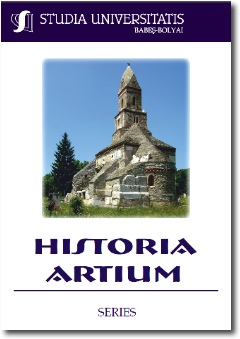REPREZENTĂRI ICONOGRAFICE ALE MORȚII ȘI ECOURILE LOR ÎN IMAGINARUL CULTURII TRADIȚIONALE ROMÂNEȘTI
ICONOGRAPHIC REPRESENTATIONS OF DEATH AND THEIR ECHO IN THE ROMANIAN TRADITIONAL CULTURE IMAGINARY
Author(s): Cosmina-Maria BerindeiSubject(s): Fine Arts / Performing Arts, Photography, Architecture, Visual Arts, Sociology of Art
Published by: Studia Universitatis Babes-Bolyai
Keywords: Death; iconography; beliefs; Dance Macabre; Grim Reaper;
Summary/Abstract: Iconographic Representations of Death and Their Echo in the Romanian Traditional Culture Imaginary. The present research focuses on a few elements that define the unrepresentable figure of Death, introduced in the Romanian cultural space by the traditional books and taken over by iconography; later, these elements had an echo in folklore adaptations or popular beliefs. We started from the conclusions of our research on the Romanian eschatological imaginary built on the idea of posthumous salvation. The travelling soul makes the posthumous journey – difficult and full of tests – successfully, almost without exception. It reaches a wealthy rest place, God’s Kingdom, due to the multiple salvation opportunities. We observed a few motifs present in the eschatological iconography, which are part of the images’ inventory of Death: the righteous’ death and the sinner’s death, the old man’s Aesopic dialogue with Death, Death’s arsenal, the deadly glass, the motif of Dance Macabre. Our research conclusion is that the iconography of Death was a privileged support of knowledge transmission toward the village world and the transmitted knowledge was interesting and available to anyone, without exception. That’s why, as an answer to a European cultural current, the representation of Death entered the iconography of the Romanian area from where it lent motifs to folklore (death’s glass, good death and bad death, scythe and the other instruments); at the same time, it left an equally strong belief in posthumous salvation or maybe it increased – through its unwanted and horrific presence – the more involved participation in the rituals of the deceased soul’s salvation.
Journal: Studia Universitatis Babes Bolyai - Historia Artium
- Issue Year: LXIII/2018
- Issue No: 1
- Page Range: 43-58
- Page Count: 16
- Language: Romanian

